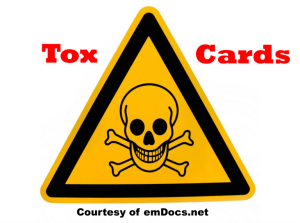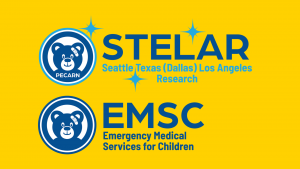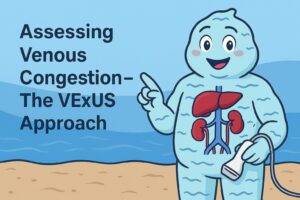Originally published at R.E.B.E.L. EM on April 26, 2021. Reposted with permission. Follow Salim R. Rezaie at @srrezaie
In emergency medicine, the standard of care is to place an advanced airway for ventilatory or oxygenation failure, impending airway compromise, or inability to protect the airway. A patient with significant cognitive impairment may have depressed gag and/or cough reflexes, putting them at risk for aspiration. The evaluation of a patient’s risk for aspiration can be highly subjective. One common adage states: “If the GCS is less than 8, then intubate”, offering a seemingly simple and more objective standard to guide airway management. Using the Glasgow Coma Scale (GCS) score of 8 or below to evaluate the need for intubation is promoted by the ATLS course and the East Association for the Surgery of Trauma (EAST) practice management guidelines.[1][2] This practice is also commonly applied to patients with non-traumatic causes of obtundation. However, the evidence behind this practice is not clear, prompting many to re-examine this oft-repeated lesson.
Glasgow Coma Scale
The Glasgow Coma Scale was created in 1974 as a system to evaluate and document the level of consciousness in patients with head injuries. [3] It is comprised of three subscales: motor response, verbal response, and eye movement. While the GCS was not initially designed to be summed into one score, this practice became widely adopted.[4] Today, the GCS remains a key component in the evaluation of patient’s level of consciousness, its use spanning across emergency medicine, pre-hospital care, neurosurgery, and trauma surgery.
Despite its widespread use, the GCS score has been criticized for its complexity and lack of consistent reliability, demonstrated across several studies.[5] Agreement percentage between attending emergency physicians in calculating GCS scores have been reported as low as 38%. In a third of cases, the GCS scores can vary by 2 or more points.[6] In a prospective study of neurologists evaluating GCS scores, exact inter-rater agreement was 71% for 267 consecutive patients in the ICU.[7] This possible variation in a patient’s GCS score can have significant changes in therapy if utilizing hard cut-offs to decide critical decisions such as airway management.
Gag and Cough Reflex
The general principle behind intubating a patient for a GCS < 8 is the theoretical loss of protective airway reflexes. Moulton et al demonstrated a strong correlation with decreasing GCS and the absence of a gag reflex. However, the same study showed that many patients with GCS above 8 also had attenuated or absent gag reflexes, especially when they were exposed to sedative medications. Conversely, several patients with GCS < 8 maintained their gag reflex. [8] A subsequent study revisited the question in a prospective observational study of 208 adult patients. While the analysis showed a significant correlation between reduced GCS and absence of cough and gag reflexes, it also found that 36% of patients with GCS < 8 maintained a normal gag reflex and 24% maintained a normal cough reflex. Similar to the Moulton study, this study also found that between one-fourth to one-fifth of patients with a normal GCS had an absent gag or cough reflex.[9]
These studies call into question the conventional wisdom regarding protective airway reflexes and their connection with level of consciousness. While there is a documented correlation, there are sufficient exceptions to warrant evaluation of airway reflexes independent of the GCS. A GCS of 3 does not guarantee the absence of airway reflexes in the same manner that a “normal” GCS does not guarantee their presence. Further complicating the matter, evaluation of a patient’s gag reflex also raises the risk of inducing emesis and leading to an aspiration event.
Aspiration with Decreased GCS
While the presence or absence of airway reflexes is theoretically important for the evaluation of airway protection, several papers have directly studied the relationship between aspiration and decreased GCS. Adnet et al found increased frequency of suspected aspiration pneumonia in patients admitted to the Toxicologic ICU with a GCS < 8. However, 10/68 patients with GCS of 9-14 also had radiographic evidence of aspiration, again highlighting the risk of airway compromise in more alert patients.[10] A 2017 retrospective analysis of 528 patients with carbon monoxide intoxication found that altered mental status (AMS) on arrival, defined as GCS < 8, was strongly associated with the development of aspiration pneumonia with an odds ratio of 9.46. The same study found significantly increased ventilator use, length of hospital stay, and in-hospital mortality. However, this study was limited by its broad definition of AMS, which didn’t factor in the clinical heterogeneity of a GCS range of 3-8.[11] It is also important to question how often witnessed aspiration leads to development of clinically relevant disease. In a study looking at rates of hospital-acquired pneumonia in 228 patients admitted to a level 1 trauma center ICU, witnessed aspiration was significantly associated with development of hospital-acquired pneumonia. However, the overall mortality, ICU length of stay, and duration of mechanical ventilation did not vary significantly with witnessed aspiration.[12]
In contrast, some prospective observational studies had found significantly lower rates of aspiration pneumonia/pneumonitis in patients with impaired consciousness. In 2009, Duncan et al followed 73 patients with decreased level of consciousness secondary to intoxication, the GCS ranging from 3 to 14. [13] Twelve of these patients had an initial GCS < 8 and 5 patients with a GCS of 3. None of these patients had episodes of aspiration and none required endotracheal intubation. Notably the one patient who required intubation had a GCS of 12 on admission. While several patients required some level of airway support, such as nasopharyngeal or oropharyngeal airways, most patients rapidly improved to their baseline level of consciousness within 24 hours. This evidence suggests that certain unconscious or obtunded patients can be safely monitored for clinical improvement without a definitive airway.
In the trauma setting, early intubation is often considered in the context of traumatic brain injury (TBI) to avoid aspiration and hypoxia leading to secondary brain injury.[14] Additionally, there can be significant uncertainty whether a patient’s decreased cognition is due to TBI or intoxication. Much of the research in patients with traumatic injuries has focused on mortality as an outcome, rather than aspiration. In a prospective study of 412 adult major trauma victims with severe TBI and initial GCS score of 3-8 per paramedics, the sole use of a GCS score did not accurately predict patient desaturation, clinical aspiration, or duration of ICU stay.[15]Furthermore, a retrospective analysis of 6676 patients presenting with a GCS between 6-8, drawn from the National Trauma Data Bank found that more patients with a GCS of 6 were intubated compared to GCS of 8, 64.3% and 56.9% respectively. Additionally, they found that intubation was significantly associated with increased odds of mortality, longer ICU stay, and overall hospital length of stay.[16]
Clinical Bottom Line
In summary, the evidence for using a patient’s GCS score is mixed. Recent review articles have highlighted the paucity of strong evidence behind the classic adage of “GCS less than 8, intubate”.[17] The evaluation of a patient’s GCS can vary significantly between providers. While multiple retrospective studies have shown an association between a depressed level of consciousness and aspiration, several prospective studies have contradicted this and appear to show a significantly lower risk of aspiration in these patients. Furthermore, the presence or absence of airway reflexes should not be assumed based on a patient’s GCS. The Glasgow coma scale can be utilized as one factor to help dictate airway management, but rigid use of a cut-off is not currently supported by robust evidence. In light of this, emergency physicians should use their gestalt and individually assess each patients’ likelihood of airway compromise.
Guest Post By:

Jorge Aceves, MD
Chief Resident at Cook County Health
Emergency Medicine
Twitter: @joaceve91

Tarlan Hedayati, MD
Associate Professor and Chair of Education at Cook County Health
Emergency Medicine
Twitter: @HedayatiMD
References:
- Committee on Trauma, American College of Surgeons. In: Advanced Trauma Life Support Student Course Manual. Chicago, IL: American College of Surgeons; 2018.
- Mayglothling J et al. Emergency Tracheal Intubation Immediately Following Traumatic Injury: An Eastern Association for the Surgery of Trauma Practice Management Guideline. J Trauma Acute Care Surg 2012. PMID: 23114490
- Teasdale G et al. Assessment of coma and impaired consciousness: a practical scale. The Lancet. 1974. PMID: 4136544
- Teasdale G et al. Glasgow Coma Scale: to sum or not to sum. Lancet. PMID: 6136811
- Green S. Cheerio, Laddie! Bidding Farewell to the Glasgow Coma Scale. Annals of Emerg Med. 2011. PMID: 21803447
- Gill M et al. Interrater reliability of Glasgow Coma Scale scores in the emergency department. Annals of Emerg Med. 2004. PMID: 14747811
- Fischer M et al. Inter-rater reliability of the Full Outline of UnResponsiveness score and the Glasgow Coma Scale in critically ill patients: a prospective observational study. Crit Care. 2010. PMID: 20398274
- Moulton C et al. Relation between Glasgow coma scale and the gag reflex. BMJ (Clinical research ed.), 1991. PMID: 1747645
- Rotheray KR et al. What is the relationship between the Glasgow coma scale and airway protective reflexes in the Chinese population?. Resuscitation, 2012. PMID: 21787740
- Adnet F et al. Relation between Glasgow Coma Scale and aspiration pneumonia. Lancet. 1996. PMID: 8676684
- Sohn CH et al. Aspiration pneumonia in carbon monoxide poisoning patients with loss of consciousness: prevalence, outcomes, and risk factors. Am J Med. 2017. PMID: 28803137
- Fawcett VJ et al. Pre-hospital aspiration is associated with increased pulmonary complications. Surg Infect. 2015. PMID: 24896218
- Duncan R et al. Decreased Glasgow Coma Scale score does not mandate endotracheal intubation in the emergency department. J Emerg Med. 2009. PMID: 19272743
- Chesnut RM. Secondary brain insults after head injury: clinical perspectives. New Horizons. 1995. PMID: 7496744
- Davis DP et al. The association between field Glasgow coma scale score and outcome in patients undergoing paramedic rapid sequence intubation. J Emerg Med. 2005. PMID: 16243194
- Hatchimonji, JS et al. Questioning dogma: does a GCS of 8 require intubation?. European journal of trauma and emergency surgery : official publication of the European Trauma Society, 1–7. Advance online publication. 2020. PMID: 32382780
- Orso D et al. Endotracheal intubation to reduce aspiration events in acutely comatose patients: a systematic review. Scand J Trauma Resusc Emerg Med. 2020. PMID: 33303004
Post Peer Reviewed By: Salim R. Rezaie, MD (Twitter: @srrezaie)








